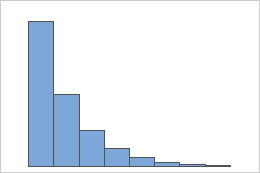When you perform an experiment with only two outcomes, the geometric distribution is a discrete distribution that can model the number of consecutive trials that are necessary to observe the outcome of interest for the first time. The geometric distribution can also model the number of nonevents that occur before you observe the first outcome.

What does memoryless mean?
An important property of the geometric distribution is that it is memoryless. The chance of an event does not depend on past trials. Therefore, the occurrence rate remains constant.
The memoryless property indicates that the remaining life of a component is independent of its current age. For example, random trials of a coin toss demonstrate the memoryless property. A system that has wear and tear, and thus becomes more likely to fail later in its life, is not memoryless.
